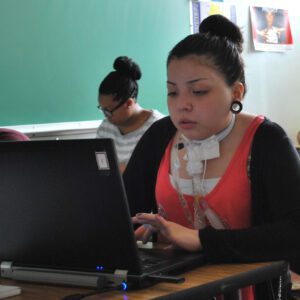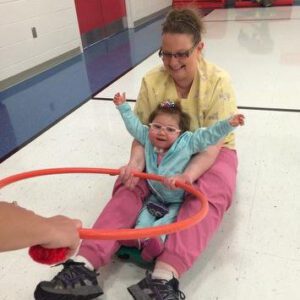With September right around the corner and summer coming to a close, children are trading in their bathing suits and summer camp for backpacks and homework. For parents of children with special needs, back to school may mean reviewing or initiating their child’s Individualized Educational Program (IEP). The IEP is mandated by the Individuals with Disabilities Education Act and defines learning objectives for any child with special needs.
Many of our ventilator-dependent patients attend school—including preschool, grade school, high school, and for some, even college. With a little extra planning and preparation, education at all levels is possible. Not only does it help maximize each child’s potential but also their ability to live an independent and more fulfilled life.
For parents or guardians who may be new to IEPs, read more to learn about IEPs and educational considerations for your child.
IEP Collaboration
The first step is to initiate the IEP. This will facilitate a smooth transition and identify educational goals and outcomes for your child. This can happen through a meeting with representatives from the school, such as the special education director, assistant principal, teachers, social work, and school nurse. Requesting a representative from the child’s nursing agency is recommended, so all patient care, safety and nursing requirements are fully addressed.
Additionally, it’s important to collaborate with the child’s clinicians—physical therapists, occupational therapists, speech pathologists, and nurses.
The IEP is a written document and must include the following educational considerations to adequately address and meet the child’s educational goals:
- Define Abilities: The student’s cognitive and functional abilities should be outlined and addressed to determine a starting point for the IEP. This includes strengths and weaknesses, and information about how the student’s abilities affect their involvement in the classroom.
- Measurable Goals: Teachers, therapists, and parents set educational goals and areas of measurement.
- Classroom Learning: Will the student be involved in the general education curriculum and integrated into a regular classroom (frequently called inclusion) or learn in one of the special education classrooms? Depending on the student’s disability and educational abilities, their IEP may include a combination of classrooms and learning styles.
- Communication Devices: Does the student require any special communication devices, such as augmentative communication, or technology for learning? This may include switches, eye gaze boards, flash cards, and eye-tracking technology system or device.
- Assessments and Testing: Will the student participate in statewide assessments and testing, and will any special considerations be made, such as extra time, quiet room, etc.
- Transportation: Depending on physical impairment, transportation to and from school needs to be determined. If your child is attending a public school, riding in a school bus may be an option. If your child is attending a private school, a wheelchair accessible van may be another option.
- Special Accommodations: During the IEP meeting, it’s important to discuss any additional accommodations, such as transportation to and from classes, participation in extracurricular activities, special seating, privacy rooms for personal care, etc.
- Nurse’s Role: The primary concern of the nurse is the student’s wellbeing and medical care; however, the secondary concern is assisting the student by taking notes, hand-over-hand, carrying books, etc. The IEP is a great collaborative tool to discuss the nurse’s role at school. Schools and many IEPs require that the nurses take direction from the teacher to ensure a smooth educational experience.
Have you participated in an IEP? If so, how did you help to keep the process collaborative and focused on the student? What was your experience and what did you learn?



